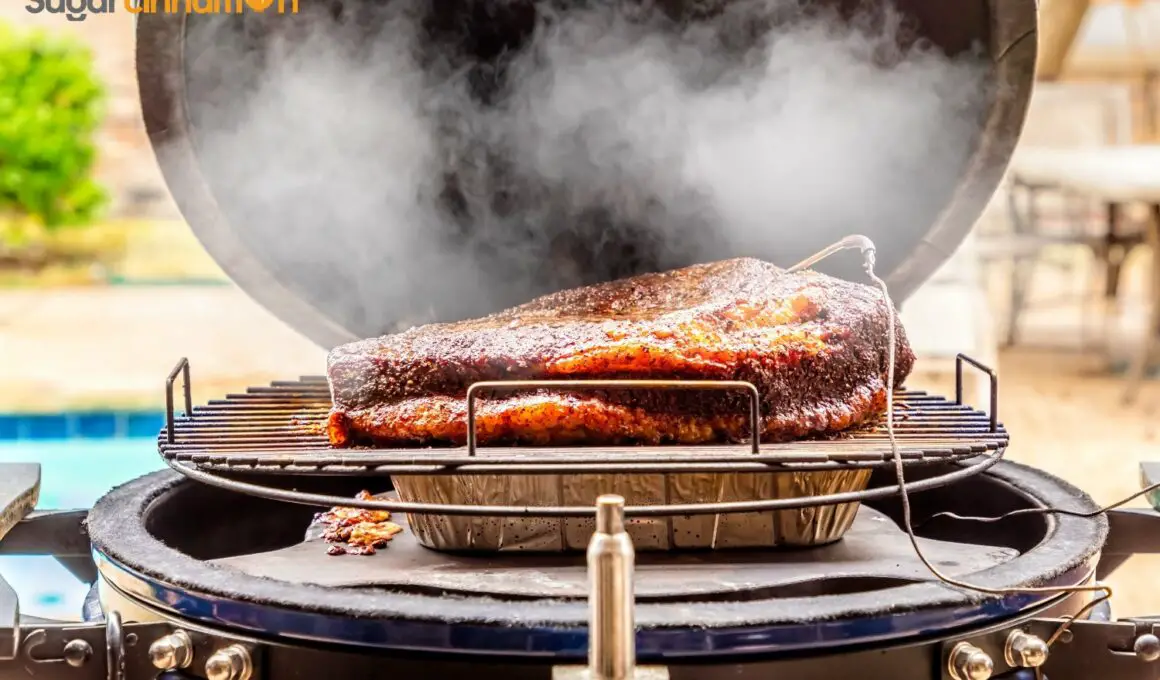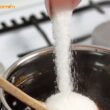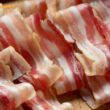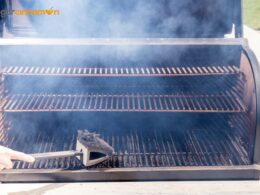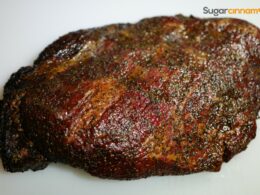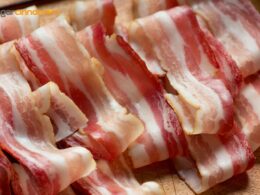Table of Contents Show
Is your brisket still tough at 200 degrees? Briskets have a lot of high-fat content and lots of muscle fiber so as enjoyable as they can be, if it’s not done the right way then find yourself with a tough chewy piece of meat. If you understand the basic techniques of cooking brisket and most importantly, the cooking temperature setting, it won’t be too daunting.
When it comes to brisket, things don’t always go as planned, but this meat keeps even the most experienced pit masters on their toes. Brisket is one of the most challenging meats to smoke but when you nail it, the result can be very rewarding. A tender juicy brisket is achievable but don’t fret when you get a tough one instead, there are ways to salvage it.
There are basic techniques that need to be adopted to enable you to make a perfect tender brisket and one that is very vital is cooking your brisket on a low and slow temperature. When brisket is cooked on slow heat, the collagen breaks down and transforms into gelatin which softens the meat.
Making the perfect brisket is not impossible. However, if you do end up with a tough and dry brisket when the internal temperature is at 200 degrees, do not fret, this informative article will show you how to handle the situation.
Why is My Brisket Tough At 200?
Before we head on to talk about how to salvage your tough smoked brisket, it is important to understand why that happened hence you can avoid repetition. There can be so many reasons why your brisket is tough and identifying this can help you understand how to fix it.
1. Undercooking
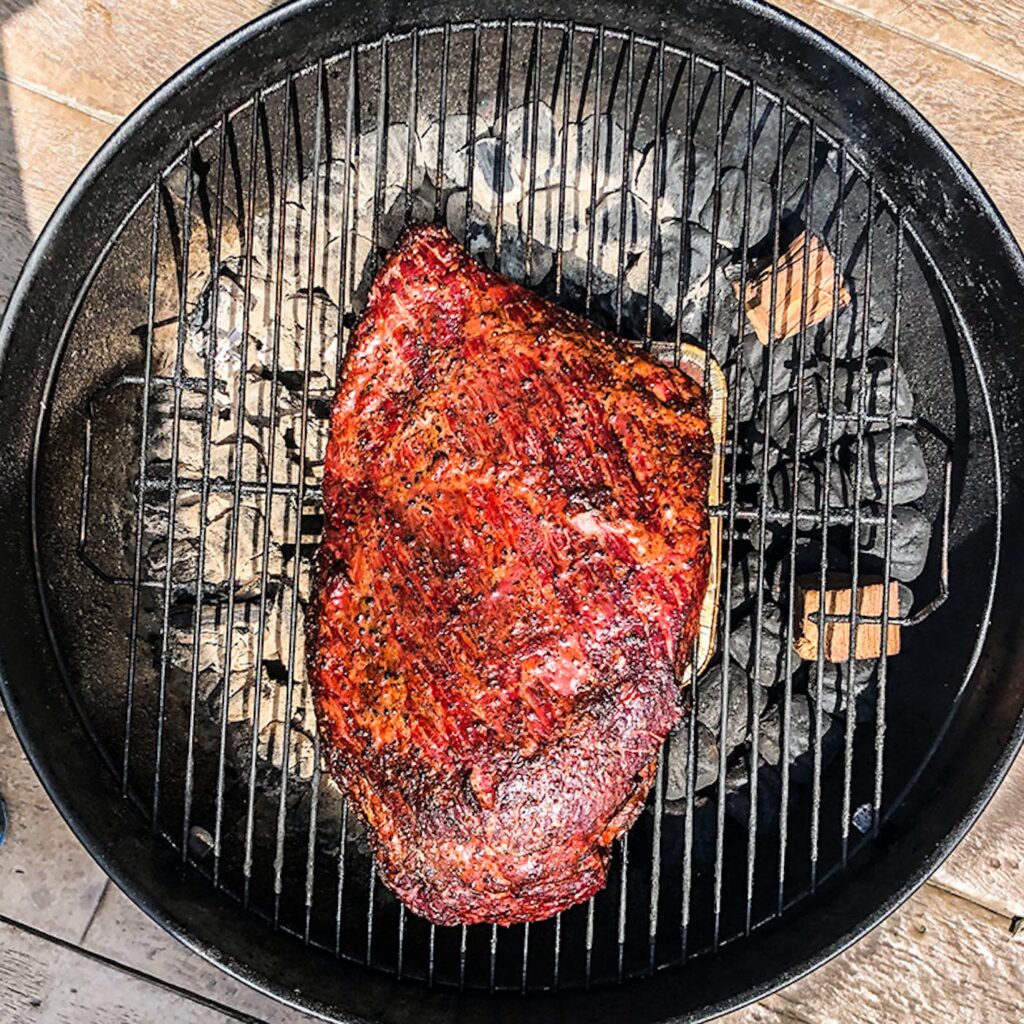
Oftentimes, tough brisket can come as a result of undercooking which is why the best method for making brisket is smoking on low temperatures for hours. If brisket is not cooked long enough then the connective tissues won’t get enough time to break down thereby leaving the meat tough and chewy.
Undercooking is the real culprit behind a tough brisket that has reached an internal temperature of 200 degrees. While the rule is that brisket reaches an internal temperature of at least 195 degrees while 205 to 210 degrees is much preferred.
2. Cooked Too Fast And Hot
Another reason will be that your brisket was cooked on very high heat, brisket is best cooked on low and slow temperatures. Cooking your brisket too fast and hot is the best way to get a trough meat, this means your meat won’t get to the desired temperature and there is not enough time for it to become tender.
The meat needs to be subjected to low and slow cooking for many hours depending on the pounds for it to be juicy and completely tender. If it’s cooked too quickly on high heat, the collagen won’t have enough chance to break down.
3. Connective Tissue/ Fat And Marbling
One significant cause of a tough brisket is the presence of the connective tissue while this is a natural part of the meat, if care is not taken, it tends to become problematic thereby leading to a tough brisket. Hence, why you should also choose a brisket with high levels of fat and marbling so it can keep the meat moist during cooking.
Just like the fat content plays a crucial role in tenderness so also is the need for the collagen to break down properly to give you a delicious tender texture. It’s important to choose brisket with good fat marbling and a decent fat cap.
4. Temperature Control
While it’s possible to cook a nice brisket with the factors listed above, it would be impossible if your temperature is not steady. You must use a meat probe to monitor the internal temperature throughout cooking, this would enable you to know when the brisket stalls and you can be patient during this period.
Ultimately, being in charge of the temperature and monitoring it would prevent you from overcooking or undercooking your brisket. While feeling and intuition are good, nothing beats having a thermometer probe to let you take charge of the temperature and pull it out at the required internal temperature.
Maintaining a low and slow consistent temperature is the key to getting a tender brisket which is why it’s important to be patient when the stalling phase happens. Constantly measuring your brisket with a thermometer probe for accurate readings will prevent you from constantly opening the smoker so you can get a brisket that is succulent and tender.
Brisket At 200 But Not Tender: What to Do
How do you save a tough brisket? It can be disappointing to spend so much time on brisket and end up with one that is too tough to enjoy. Brisket is packed with connective tissue and collagen, so even a pit master finds it to be a bit difficult to deal with, although the result is often worth it.
Fortunately, a brisket at 200⁰ not tender is not the end of the world, here is what you can do to turn it into mouthwatering meat.
1. Return to Cook on Low Heat
Tough brisket can be saved and one of the viable ways to do that is to return it to cook on low heat. Even if the temperature has dropped to 200⁰, it might not be cooked to tenderness so you can return it to the smoker and let it cook some more on low heat.
However, this is only applicable when your brisket has not already been rested for an hour or more, taking it back to cook more after resting might cause it to become dry and lose its desirable texture. Do this if the brisket has not reached an internal of 205⁰.
2. Make Brisket Stew

Unfortunately, some briskets can be made to soften by taking it back to the smoker. But you can make a delicious brisket stew with it. This is not just a great way to use tough briskets but leftover briskets as well. Start by cutting the tough brisket into cubes about 2 inches thick then brown it in a pot with oil before adding enough beef broth, vegetables, or beans.
Let the mixture simmer for 2 to 3 hours until the meat becomes tender and the flavors are all infused together. Season with salt and pepper then it can be enjoyed on a cold day as a comforting stew or served with plenty of rolls and crusty bread.
3. Refrigerate And Bake It
If your brisket comes out too tough at an internal temperature of 200 degrees, no reason to panic. Simply let it cool then wrap it in brisket wrap to preserve the juice then have it stored in the fridge overnight. Bring it out the next day and have it cut into thin pieces then place it in your baking dish to be reheated in your oven
Place in your oven and reheat at around 350 degrees F for an hour. This is a great way to soften the brisket and it’s one of our favorite methods as well.
4. Rest it Longer
Resting your brisket after pulling it from the smoker is important so when you get tough meat, you can also rest it longer to redistribute and reabsorb juices and also enable the fat expelled throughout cooking to settle. If you end up with a tough cut at 200 degrees, let it rest for 1 more hour, so the temperature remains at a safer level.
5. Braising
Braising your brisket will help make it tender while retaining the juiciness. Braising is an effective technique that involves slow cooking your brisket in a liquid to break down the tough connective tissues.
To braise your tough brisket, place it in a roasting pan or dish and top it with some onions and pepper, and pour wine and some beef broth. Cook on low and slow heat until it becomes tender.
6. Make Burnt Ends
Turn your tough brisket into burnt ends, it is really easy and we can say it’s even more delicious anyway. Cut your brisket into small cubes about 1 ½ or 2 inches then have it placed on a roasting pan or an aluminum tray.
Lather them with your favorite barbecue sauce and pour it over your brisket, ensure to cover with enough sauce. Next, prepare your oven then set the temperature to 225 degrees. Simply roast the brisket for an hour or two to let the meat soften and allow the sauce to caramelize.
7. Make Some Brisket Dumplings
Do not worry about your tough brisket, you can turn it into a delicious dumpling recipe that can be enjoyed alone and served to guests as well. This is simply made by putting a few tablespoons of hoisin into the brisket and then having it shredded with two forks and then pumping in some dumpling pastry. Boil up your dumplings and it should be ready to be enjoyed.
Get the brisket dumpling recipe.
Final Thoughts
Finally, do keep in mind when next you are making a brisket that the control and functionality of the utility being used are of vital importance. Make sure it is working properly, it is not broken or inefficient, and also, do have a meat thermometer probe at hand so you can effectively cook up a flavorsome and tender brisket.
Ending up with a tough brisket after all your efforts in making tender juicy meat can be frustrating. However, you do not have to throw the meat out, any of the methods listed above can really help you fix tough brisket in no time or you can simply throw it back in the smoker to make it tender.






